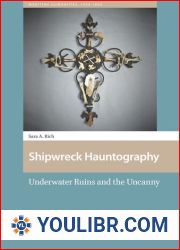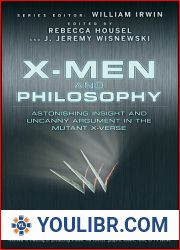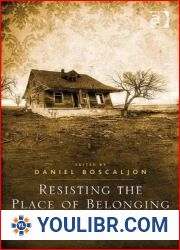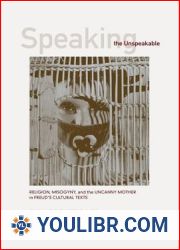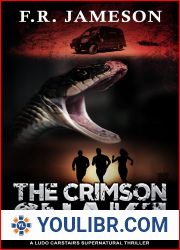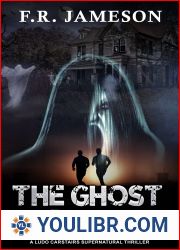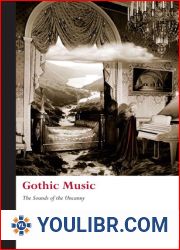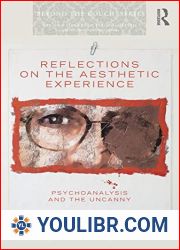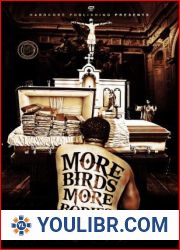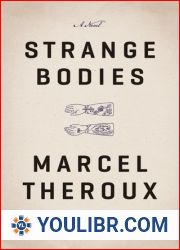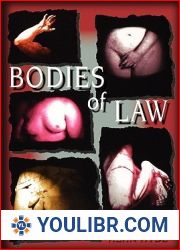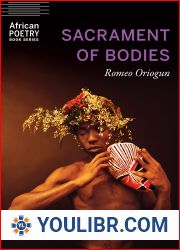
BOOKS - Uncanny Bodies: The Coming of Sound Film and the Origins of the Horror Genre

Uncanny Bodies: The Coming of Sound Film and the Origins of the Horror Genre
Author: Robert Spadoni
Year: January 1, 2007
Format: PDF
File size: PDF 908 KB
Language: English

Year: January 1, 2007
Format: PDF
File size: PDF 908 KB
Language: English

Uncanny Bodies The Coming of Sound Film and the Origins of the Horror Genre In 1931, Universal Pictures released two films that marked the beginning of the horror genre in Hollywood cinema: Dracula and Frankenstein. These films not only terrified audiences but also revolutionized the film industry with the introduction of sound technology. In his book, "Uncanny Bodies Robert Spadoni argues that the coming of sound played a significant role in shaping the horror genre and its evolution over time. The Transition to Sound Film The transition from silent films to sound films was a pivotal moment in the history of cinema. The shift from silence to sound brought about a fundamental change in the way stories were told on screen. Suddenly, dialogue and music became integral parts of the film-watching experience, immersing audiences in a new world of sounds and sensations. However, this transition was not without its challenges. Many early sound films were plagued by technical issues, such as poor sound quality, echoey recording spaces, and actors' muffled voices. Ghostly Impressions Spadoni suggests that these early sound films left a lasting impression on audiences, who perceived them as unreal and ghostly. This impression was due to the novelty of sound and the unfamiliarity of the technology at the time. Audiences were mesmerized by the new sounds and voices emanating from the screen, creating an otherworldly atmosphere that heightened the sense of fear and suspense in the films.
Uncanny Bodies The Coming of Sound Film and the Origins of the Horror Genre В 1931 году Universal Pictures выпустила два фильма, положивших начало жанру ужасов в голливудском кино: «Дракула» и «Франкенштейн». Эти фильмы не только ужаснули зрителей, но и произвели революцию в киноиндустрии, внедрив звуковые технологии. В своей книге «Uncanny Bodies» Роберт Спадони утверждает, что приход звука сыграл значительную роль в формировании жанра ужасов и его эволюции с течением времени. Переход к звуковому кино Переход от немого кино к звуковому кино стал поворотным моментом в истории кинематографа. Переход от тишины к звуку привел к фундаментальным изменениям в том, как истории рассказывались на экране. Внезапно диалог и музыка стали неотъемлемыми частями опыта просмотра фильмов, погрузив зрителей в новый мир звуков и ощущений. Однако этот переход не обошелся без своих вызовов. Многие ранние звуковые фильмы страдали от технических проблем, таких как плохое качество звука, пространство для записи эхоэя и приглушённые голоса актёров. Призрачные впечатления Спадони предполагает, что эти ранние звуковые фильмы оставили неизгладимое впечатление у зрителей, которые воспринимали их как нереальные и призрачные. Такое впечатление было связано с новизной звука и незнакомостью технологии в то время. Зрители были заворожены новыми звуками и голосами, исходящими от экрана, создавая потустороннюю атмосферу, которая усиливала чувство страха и саспенса в фильмах.
Uncanny Bodies The Coming of Sound Film and the Origins of the Horror Genre En 1931, Universal Pictures a publié deux films qui ont marqué le début du genre d'horreur dans le cinéma hollywoodien : Dracula et Frankenstein. Non seulement ces films ont terrifié le public, mais ils ont également révolutionné l'industrie cinématographique en introduisant des technologies sonores. Dans son livre Uncanny Bodies, Robert Spadoni affirme que l'arrivée du son a joué un rôle important dans la formation du genre d'horreur et de son évolution au fil du temps. passage au cinéma sonore passage du cinéma muet au cinéma sonore a marqué un tournant dans l'histoire du cinéma. passage du silence au son a entraîné des changements fondamentaux dans la façon dont les histoires ont été racontées à l'écran. Tout à coup, le dialogue et la musique font partie intégrante de l'expérience cinématographique, plongeant le public dans un nouveau monde de sons et de sensations. Mais cette transition n'a pas été sans défis. De nombreux premiers films sonores ont souffert de problèmes techniques, tels que la mauvaise qualité du son, l'espace pour enregistrer des échos et les voix silencieuses des acteurs. s impressions fantômes de Spadoni suggèrent que ces premiers films sonores ont laissé une impression indélébile au public, qui les considérait comme irréels et fantômes. Cette impression était liée à la nouveauté du son et à l'ignorance de la technologie à l'époque. public était fasciné par les nouveaux sons et les nouvelles voix provenant de l'écran, créant une atmosphère d'au-delà qui augmentait le sentiment de peur et de suspense dans les films.
Uncanny Bodies The Coming of Sound Film and the Origins of the Horror Genre En 1931, Universal Pictures lanzó dos películas que marcaron el inicio del género de terror en el cine de Hollywood: Drácula y Frankenstein. Estas películas no solo horrorizaron al público, sino que revolucionaron la industria cinematográfica al introducir la tecnología del sonido. En su libro «Uncanny Bodies», Robert Spadoni afirma que la llegada del sonido jugó un papel significativo en la formación del género de terror y su evolución a lo largo del tiempo. Transición al cine sonoro paso del cine mudo al cine sonoro marcó un punto de inflexión en la historia del cine. paso del silencio al sonido ha supuesto un cambio fundamental en la forma en que se han contado las historias en pantalla. De repente, el diálogo y la música se convirtieron en partes integrales de la experiencia de ver películas, sumergiendo al público en un nuevo mundo de sonidos y sensaciones. n embargo, esta transición no estuvo exenta de sus desafíos. Muchas de las primeras películas sonoras sufrieron problemas técnicos, como la mala calidad del sonido, el espacio para grabar ecoei y las voces silenciosas de los actores. fantasmas impresiones de Spadoni sugieren que estas primeras películas sonoras dejaron una impresión indeleble en el público, que las percibía como irreales y fantasmales. Esta impresión se debió a la novedad del sonido y a la falta de familiaridad de la tecnología en ese momento. público estaba fascinado por los nuevos sonidos y voces que emanaban de la pantalla, creando una atmósfera de otro mundo que aumentaba la sensación de miedo y suspenso en las películas.
Uncanny Bodies The Coming of Sound Film and the Origins of the Horror Genre Nel 1931 Universal Pictures ha pubblicato due film che hanno dato il via al genere horror nel cinema di Hollywood, Dracula e Frankenstein. Questi film non solo hanno terrorizzato gli spettatori, ma hanno anche rivoluzionato l'industria cinematografica introducendo tecnologie sonore. Nel suo libro Uncanny Bodies, Robert Spadoni sostiene che l'arrivo del suono ha avuto un ruolo significativo nella formazione del genere horror e nella sua evoluzione nel corso del tempo. Il passaggio dal cinema muto al cinema sonoro è stato un punto di svolta nella storia del cinema. Il passaggio dal silenzio al suono ha portato a cambiamenti fondamentali nel modo in cui le storie sono state raccontate sullo schermo. Improvvisamente, il dialogo e la musica sono diventati parte integrante dell'esperienza di guardare film, immergendo gli spettatori in un nuovo mondo di suoni e sensazioni. Questa transizione, però, non è mancata. Molti dei primi film sonori hanno sofferto di problemi tecnici, come la scarsa qualità del suono, lo spazio per registrare ecoei e le voci abbassate degli attori. impressioni fantasmagoriche di Spadoni suggeriscono che questi primi film sonori hanno lasciato un'impressione indelebile negli spettatori che li consideravano irreali e fantasmagorici. Questa impressione era legata alla novità del suono e all'estraneità della tecnologia all'epoca. Il pubblico era attratto da nuovi suoni e voci provenienti dallo schermo, creando un'atmosfera esterna che aumentava il senso di paura e saspenza nei film.
Uncanny Bodies The Coming of Sound Film and the Origins of the Horror Genre 1931 veröffentlichte Universal Pictures zwei Filme, die das Horror-Genre im Hollywood-Kino begründeten: Dracula und Frankenstein. Diese Filme entsetzten nicht nur das Publikum, sondern revolutionierten auch die Filmindustrie durch die Einführung von Soundtechnologien. In seinem Buch „Unheimliche Körper“ argumentiert Robert Spadoni, dass die Ankunft des Klangs eine bedeutende Rolle bei der Gestaltung des Horror-Genres und seiner Entwicklung im Laufe der Zeit gespielt hat. Übergang zum Tonfilm Der Übergang vom Stummfilm zum Tonfilm war ein Wendepunkt in der Geschichte des Kinos. Der Übergang von Stille zu Klang führte zu grundlegenden Veränderungen in der Art und Weise, wie Geschichten auf der inwand erzählt wurden. Plötzlich wurden Dialog und Musik zu integralen Bestandteilen des Filmerlebnisses und tauchten das Publikum in eine neue Welt der Klänge und Empfindungen ein. Dieser Übergang blieb jedoch nicht ohne Herausforderungen. Viele frühe Tonfilme litten unter technischen Problemen wie schlechter Tonqualität, Raum für Echoei-Aufnahmen und gedämpften Stimmen der Schauspieler. Spadonis gespenstische Eindrücke deuten darauf hin, dass diese frühen Tonfilme bei Zuschauern, die sie als unwirklich und gespenstisch empfanden, einen bleibenden Eindruck hinterlassen haben. Dieser Eindruck war auf die Neuheit des Klangs und die damals unbekannte Technologie zurückzuführen. Das Publikum war fasziniert von den neuen Klängen und Stimmen, die von der inwand kamen, und schuf eine jenseitige Atmosphäre, die das Gefühl von Angst und Spannung in den Filmen verstärkte.
''
Uncanny Bodies Ses Filminin Gelişi ve Korku Türünün Kökenleri 1931 yılında Universal Pictures, Hollywood sinemasında korku türünün başlangıcını belirleyen iki film yayınladı: Dracula ve Frankenstein. Bu filmler sadece izleyicileri dehşete düşürmekle kalmadı, aynı zamanda ses teknolojisini tanıtarak film endüstrisinde devrim yarattı. Robert Spadoni, "Uncanny Bodies'adlı kitabında, sesin gelişinin korku türünün oluşumunda ve zaman içindeki evriminde önemli bir rol oynadığını savunuyor. Sesli sinemaya geçiş Sessiz sinemadan sesli sinemaya geçiş sinema tarihinde bir dönüm noktasıydı. Sessizlikten sese geçiş, hikayelerin ekranda anlatılma biçiminde temel değişikliklere yol açtı. Aniden, diyalog ve müzik film deneyiminin ayrılmaz bir parçası haline geldi ve izleyicileri yeni bir ses ve his dünyasına soktu. Ancak, bu geçiş zorlukları olmadan değildi. Birçok erken sesli film, düşük ses kalitesi, ehoei kayıt alanı ve oyuncuların boğuk sesleri gibi teknik sorunlardan muzdaripti. Spadoni'nin hayalet izlenimleri, bu erken sesli filmlerin, onları gerçek dışı ve hayalet olarak algılayan izleyiciler üzerinde kalıcı bir etki bıraktığını göstermektedir. Bu izlenim, sesin yeniliği ve o zamanki teknolojinin bilinmemesinden kaynaklanıyordu. İzleyiciler, ekrandan yayılan yeni sesler ve seslerle büyülendi ve filmin korku ve gerilim duygusunu artıran başka bir dünya atmosferi yarattı.
Uncanny Bodies The Coming of Sound Film and the Origins of the Horror Cenre في عام 1931، أصدرت Universal Pictures فيلمين يمثلان بداية نوع الرعب في سينما هوليوود: دراكولا وفرانكشتاين. لم ترعب هذه الأفلام المشاهدين فحسب، بل أحدثت ثورة في صناعة السينما من خلال إدخال تكنولوجيا الصوت. في كتابه «الأجسام الغريبة»، يجادل روبرت سبادوني بأن وصول الصوت لعب دورًا مهمًا في تكوين نوع الرعب وتطوره بمرور الوقت. الانتقال إلى السينما الصوتية كان الانتقال من السينما الصامتة إلى السينما الصوتية نقطة تحول في تاريخ السينما. أدى التحول من الصمت إلى الصوت إلى تغييرات جوهرية في طريقة سرد القصص على الشاشة. فجأة، أصبح الحوار والموسيقى جزءًا لا يتجزأ من تجربة الفيلم، مما أدى إلى غمر المشاهدين في عالم جديد من الأصوات والأحاسيس. ومع ذلك، لم يخلو هذا الانتقال من التحديات. عانت العديد من الأفلام الصوتية المبكرة من مشاكل تقنية، مثل رداءة جودة الصوت، ومساحة تسجيل ehoei، وأصوات الممثلين المكتومة. تشير انطباعات سبادوني الشبحية إلى أن هذه الأفلام الصوتية المبكرة تركت انطباعًا دائمًا لدى الجماهير التي اعتبرتها غير واقعية وشبحية. يرجع هذا الانطباع إلى حداثة الصوت وعدم إلمام التكنولوجيا في ذلك الوقت. فتنت الجماهير بالأصوات والأصوات الجديدة المنبثقة من الشاشة، مما خلق جوًا آخر زاد من إحساس الفيلم بالخوف والتشويق.







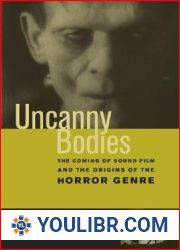
 49
49  2 TON
2 TON

